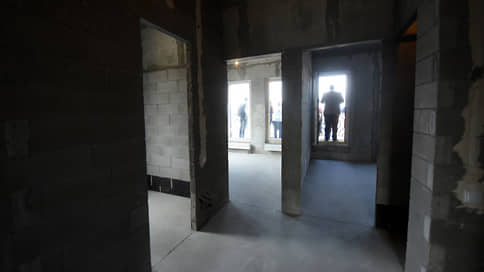Prices for new buildings in Russia 2023, forecast
[ad_1]

Sensing a revival in demand, developers returned to price indexation: new buildings in Russia’s largest regional markets rose in price by 0.7-1% over the month. Interest in primary housing is likely to continue to grow due to rising mortgage rates and a reduction in the number of available offers in the secondary market. But in the medium term, this is unlikely to lead to more pronounced price dynamics. Despite the good activity of buyers, the supply of new buildings is still growing faster than demand, analysts remind.
The average cost of new buildings in the 18 largest regional markets of the country (16 million-plus cities, Moscow and Leningrad regions) in July amounted to 144.4 thousand rubles, having increased by 0.7% compared to June. Year-on-year growth was 2.3%. Such data are provided by CIAN.Analytics experts, noting that for the first time in the past six months, developers have increased the rate of price indexation for active lots. According to the “Etazhy” data, in Russia as a whole, primary housing now costs 120.4 thousand rubles. per sq. m. Over the month, the value increased by 1%, over the year – by 7.2%.
The average cost of an apartment in new buildings in Russia is now 5.89 million rubles, clarified in Avito Real Estate. Over the year, this value decreased by 1.1%, and over the month – by 1.3%.
The recovery in demand observed in March-June allowed some developers to return to the practice of raising prices, says Alexei Popov, head of CIAN.Analytics. The most pronounced increase in the average value for the month, according to the company, occurred in Chelyabinsk – by 3.2%, to 98.8 thousand rubles. per sq. m. In Perm, the growth was 1.8%, 114.8 thousand rubles. per sq. m. Analysts “Etazhy” noticed an increase of 2.2% per month in the average cost of new buildings in Volgograd, up to 82.2 thousand rubles. per sq. m. In Surgut, the dynamics was 2.7%, up to 107.9 thousand rubles. per sq. m. At the same time in Voronezh, the average cost of new buildings for the month, according to CIAN.Analitiki, decreased by 1.9%, to 92.7 thousand rubles. per sq. m.
Indicative for the market is usually considered the dynamics in the largest cities of the country – due to the greater volume of exposure. In St. Petersburg, according to calculations by CIAN.Analytics, the average cost of new buildings increased by 0.2% over the month, to 231.3 thousand rubles. per sq. m. In Moscow, the same dynamics amounted to 1.8%, up to 324.2 thousand rubles. per sq. m.
Avito Real Estate adds that the average apartment in new buildings in St. Petersburg now costs 8 million rubles, in Moscow – 13.6 million rubles. Over the year, both of these indicators decreased – by 9.7% and 3%, respectively.
Irina Dobrokhotova, managing partner of Dombook, says that 71.9 thousand lots are currently exhibited in the primary market of Moscow. While in old Moscow the volume of exposure has begun to decline, in New Moscow the figure is still growing, she notes. The upward trend in supply continues throughout the country. According to the calculations of the head of the primary direction of “Avito Real Estate” Dmitry Alekseev, the total exposure for the month increased by 6.3%, for the year – by 66.8%. At the same time, the activity of potential buyers on the platform increased by 12.5% and 37.4%, respectively. Alexey Popov points out that the number of registered equity participation agreements has remained stable over the past few months, but the number of targeted actions with announcements has increased by 15% over the month.
Demand for new buildings is fueled, in particular, by the reduction in available supply in the secondary market, says Sergey Zaitsev, Sales Director of Etazhi. He does not rule out that the trend will become more pronounced with the growth of mortgage rates in the secondary market with a further increase in the key rate of the Central Bank. For the segment of new buildings, where there are preferential programs, this will mean an increase in the costs of the authorities to compensate for the difference in rates, recalls Mr. Popov. This can lead to a faster exhaustion of the allocated limits. “With a high probability, we will see a change in the main message of most developers’ advertising campaigns from “buy more profitably” to “buy faster,” the expert argues.
By itself, the reversal of buyers towards the primary market may start to heat up prices, Mr. Zaitsev warns. In this case, according to his forecasts, we will talk about restrained growth of 0.5-1% per month. Although the expert considers the preservation of near-zero fluctuations to be a more expected scenario.
Alexey Popov is also inclined to believe that even in the face of growing attractiveness of new buildings, developers will continue to carefully approach pricing. “The only factor in the growth of the average price in the medium term is a decrease in the share of objects in the pit, because there are fewer new projects this year,” he argues. Dmitry Alekseev considers the continuing imbalance in the market to be an important factor: supply is still growing faster than demand, which means that there are no fundamental factors to increase the value. The Level Group agrees that the primary market continues to be pressured by competition-increasing overstocking, but now its pressure is gradually decreasing.
[ad_2]
Source link





